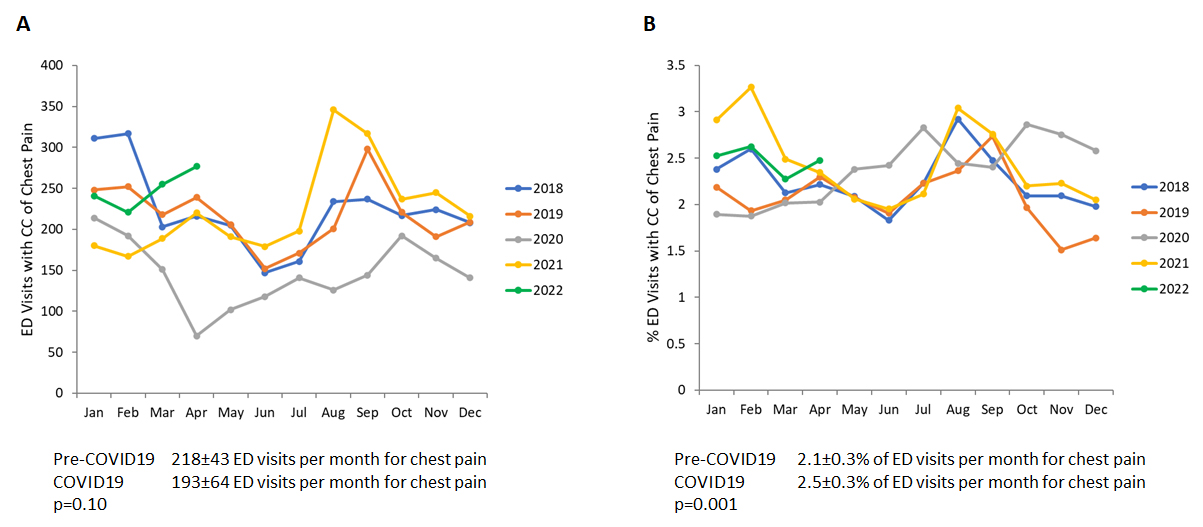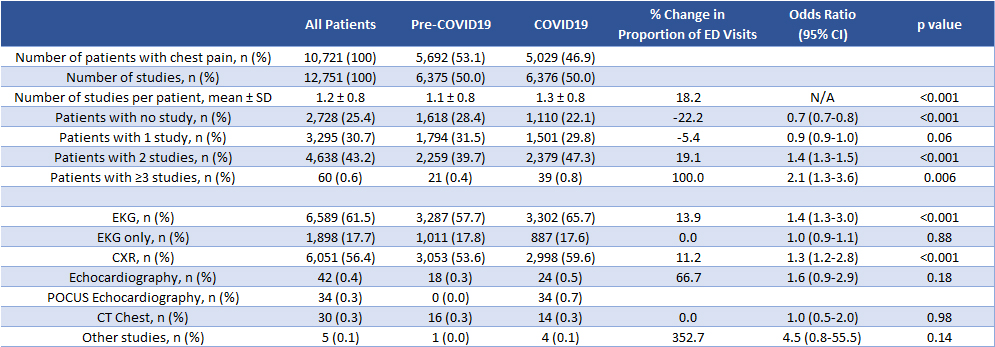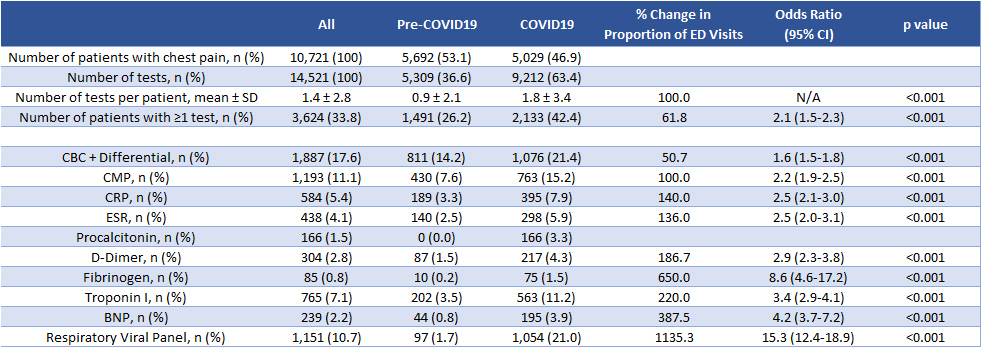Emergency Medicine: All Areas
Emergency Medicine 4
67 - Pediatric Emergency Department Visits for Chest Pain Before and During the COVID-19 Pandemic – A Retrospective Single Center Study
Friday, April 28, 2023
5:15 PM - 7:15 PM ET
Poster Number: 67
Publication Number: 67.112
Publication Number: 67.112
Ayhan Atmanli, University of Texas Southwestern Medical School, Dallas, TX, United States; Amy Zhou, University of Texas Southwestern Medical School, Dallas, TX, United States; Kenneth Yen, UT Southwestern Medical Center, Dallas, TX, United States

Ayhan Atmanli, MD, PhD (he/him/his)
Resident Physician
University of Texas Southwestern Medical School
Dallas, Texas, United States
Presenting Author(s)
Background: Chest pain is a common chief complaint (CC) in pediatric emergency departments (EDs) and often due to benign, noncardiac etiologies. Coronavirus disease-2019 (COVID-19) has been shown to increase the risk of cardiac disease. It remains unclear if and to what extent COVID-19 has changed how pediatric emergency providers approach patients presenting with chest pain.
Objective: To characterize the extent of diagnostic workup for the CC of chest pain in a pediatric emergency department before and during the COVID-19 pandemic.
Design/Methods: This was a retrospective study of children between the ages of 2-17 years presenting to the pediatric ED at Children’s Medical Center campuses in Dallas and Plano, TX between 1/1/2018 and 4/30/2022 with the CC of chest pain. Data was abstracted from electronic medical records. We excluded patients with a previous history of cardiac disease. We defined the Pre-COVID19 period as 1/1/2018-2/29/2020 and the COVID19 period as 3/1/2020-4/30/2022.
Results: Of the 10721 encounters during the study period, 5692 occurred before and 5029 during COVID-19. While the absolute number of ED visits for chest pain did not change during the pandemic (Figure 1A), chest pain accounted for 2.5% of visits during COVID-19 compared to 2.1% before COVID19 (Figure 1B). Patient demographics and disposition as well as secondary CCs were similar before and during COVID-19. Patients received an average of 18.2% more diagnostic studies during COVID-19, including 13.9% more EKGs and 11.2% more chest X-rays (Table 1). While there was no difference in the number of echocardiograms obtained before versus during COVID-19, more patients had cardiology consults (p< 0.001) and received outpatient cardiology referral (p< 0.001) during COVID-19. Compared to Pre-COVID19, 100% more diagnostic tests were ordered, including cardiac markers Troponin I and BNP (Table 2), during COVID-19. We performed a sub-analysis of patients presenting with chest pain as the only CC and found similar trends in diagnostic testing before versus during COVID-19, but with larger differences. During COVID-19, 1.1% of patients had a cardiac etiology of chest pain compared with 0.7% before COVID-19 (OR 1.6, 95% CI 1.1-2.4; p=0.03).
Conclusion(s): More imaging studies and laboratory tests were obtained, and more cardiology consults and referrals were placed during COVID-19 compared to pre-pandemic years for the CC of chest pain. This may be due to higher patient acuity during the pandemic and thus higher pre-test probability for cardiac disease. Alternatively, our data suggest a possible change in ED provider behavior during the pandemic.



